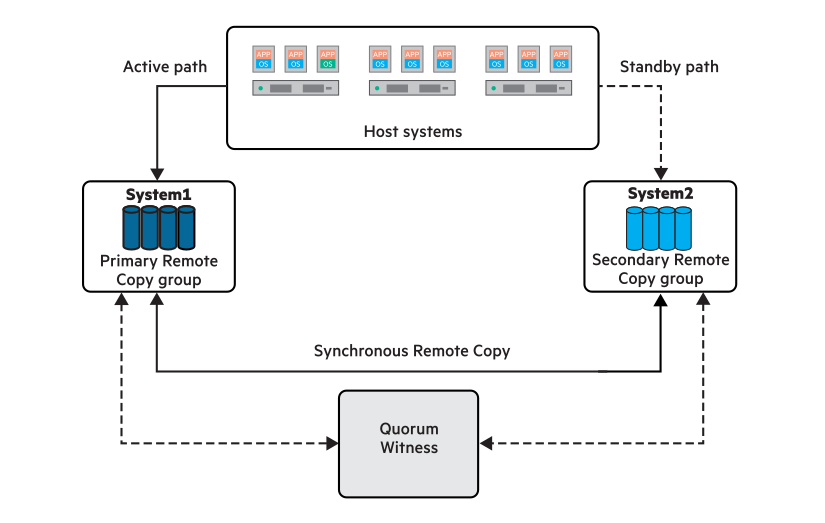Remote Copy with HPE Peer Persistence configuration
If the primary system fails, HPE Peer Persistence redirects host I/O from one storage system to another in a manner that is transparent to the host. Peer Persistence enables two data centers at metropolitan distances to act as peers to each other, or provide load balancing across the data centers.
Peer Persistence is a high availability (HA) solution that uses Remote Copy synchronous mode and ensures that the same data is on both storage systems. The hosts are zoned to both storage systems so they can access the volumes on both systems. Both source and target volumes are exported to the hosts.
Peer Persistence provides both manual and automatic transparent failover options.
Manual transparent failover (MTF)
A Peer Persistence MTF or manual switchover operation results in the following:Failover of the host I/O for the volumes in the Remote Copy group
Host I/O service moving from one storage system in the Peer Persistence configuration to the other
Reversal in the direction of data replication
Automatic transparent failover (ATF)
A Peer Persistence ATF operation redirects host I/O automatically from a failed storage system to the other storage system transparent to the host.
Peer Persistence ATF requires the configuration of an HPE Quorum Witness which provides an alternative means for the storage systems to communicate. This alternative communication path is necessary to verify that a failure has occurred and help prevent data inconsistencies before executing an ATF.
